How To Trade With Point and Figure Chart – An Expert’s Take 2024
By Jordan Blake
January 10, 2024 • Fact checked by Dumb Little Man
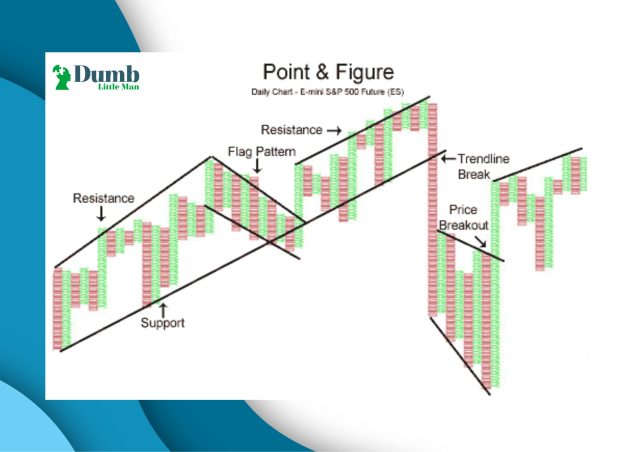
Whether a day trader or swing trader, you know the importance of finding and trading with the trend. Point and figure charts are one of the best ways to identify the long-term trends in the market. Besides that, it is also a basic tool for technical analysis.
But why are points and figure charts important? Well, the traditional charts only show the price action. But, point and figure charts are best for visual representation that indicates the changes in supply and demand. Investors can utilize charts to produce a map of the price and make predictions about its path, assisting them in formulating trading tactics.
To better understand the point and figure chart, we have got Ezekiel Chew, the founder, and CEO of Asia Forex Mentor. Ezekiel is a well-known figure in the point-and-figure charting community. With his in-depth knowledge and years of experience, he will share the ins and outs of P&F charts with us.
In this article, we will discuss the basic concepts of P&F charts, their history, usage, how to calculate Point and Figure charts, and more. So, let's dive right into it.
What is Point and Figure Chart
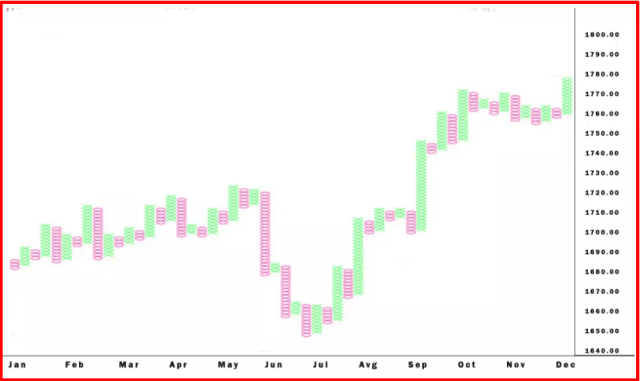
Point and Figure charts are technical charting dating back to the early 1900s when it was first published in the Wall Street Journal. Point and figure have no one namesake or discoverer; rather, it is just a tool used by traders.
In earlier trading days, traders used different methods to record price action. The point and figure were created to remove the unnecessary market noise. It was designed to only show the essential price information by filtering out the smaller price movements.
A point and figure chart look like a grid with Xs and Os. The Xs represent rising prices, while the Os represent falling prices. The chart is created by plotting these points on a graph. The main benefit of using a point and figure chart is that it only plots significant price movement. This makes it a great tool for identifying long-term trends.
History of Chart Pattern
The first references to Point & Figure charts date back to 1898, called “Figure Charts.” Over time, these charts have evolved and now feature Xs and several numbers. The basic P&F chart with X's and O's was created by A.W. Cohen.
P&F charts were popular among traders before computers dominated because they could easily keep track of a plethora of charts. By utilizing P&F charts, individuals with only rudimentary tools like paper and pen could analyze over fifty per day.
How to Use Point and Figure Charts
A point and figure chart's basic purpose is to display an asset's price volatility over a certain period. The arithmetical y-axis typically shows only amounts of money. It displays how often the prices increased or decreased and the time between each rise or fall.
The box size is the quantity used and describes the connection between y-axis markings. Moreover, the X's and O's on this chart represent how often the stock went up or down by a given limit. This limit is known as the box size.
Point and Figure Charts – What do they Indicate
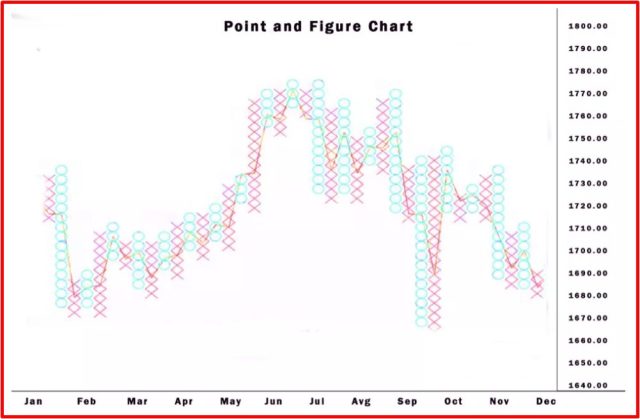
Point-and-figure chart patterns provide information on future price movements based on past activity. In other words, investors use these charts to time their trades and maximize profits.
The interesting thing about these charts is that they don't display a timeline. Instead, they show price swings. P&F charts are most effective when they display the price in situations where it makes a significant change. The chart will remain blank when nothing vital happens at a certain moment.
Breakouts and reversals are caused by breaking news, making bar charts and line graphs perceived as being driven by news events.
How to Calculate the Charts
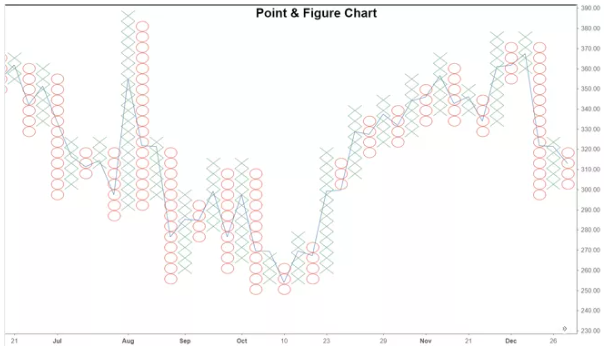
There is no set formula for this strategy. Yet, it does require two factors: the first is the box size, which can be a specific amount of money, a percentage of the current price, or it can be based on the actual average range and imply that box size will vary in reaction to volatility.
You will also need to adjust the amount of reversal, which is typically three times the size of the box. However, the reversal is not limited and can be customized according to the investor's preference.
You can use high and low prices for the asset or just the closing price. If you use high and low prices, it creates extra Xs and O's. Using only a closing price makes smaller Xs and O's.
Point and Figure Charts Advantages
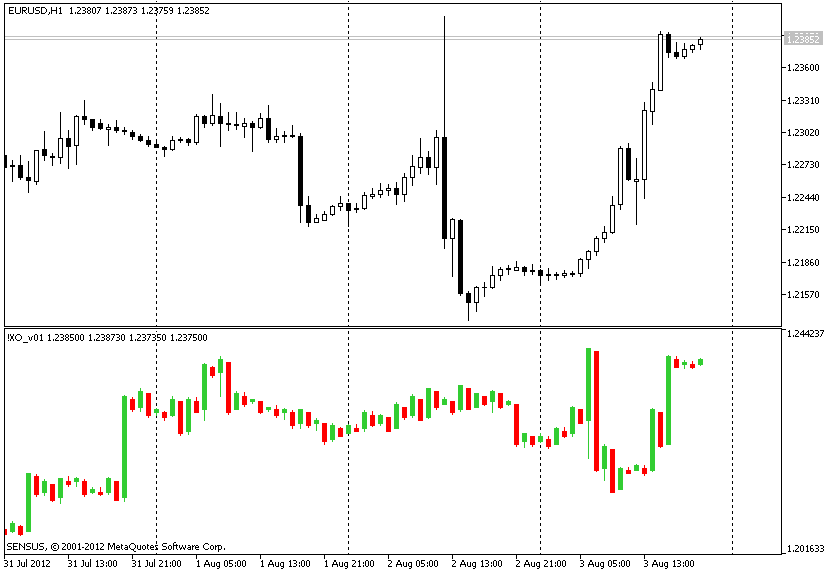
P&F charts offer many benefits to traders. These charts are easy to construct and understand, yet they provide a wealth of information. Below are a few of the advantages of P&F charts:
- Breakdowns and breakouts are clear cut: Purchasing and selling signals cannot be debated. However, a signal must have supportive evidence from the chart to back it up.
- Investor sentiment contained: Investors don't buy or sell based on emotions but point-and-figure signals. Therefore, any news report will not deter an investor from making a transaction if there is no signal.
- No arbitrary drawing of trend lines: The rules for drawing trend lines on P&F charts ensure compactness, keeping with other charting systems such as the bar and candle. In this case, subjective trend line placement is conceivable.
- P&F charts are more reliable because they eliminate unnecessary data.
Point and Figure Charts Disadvantages
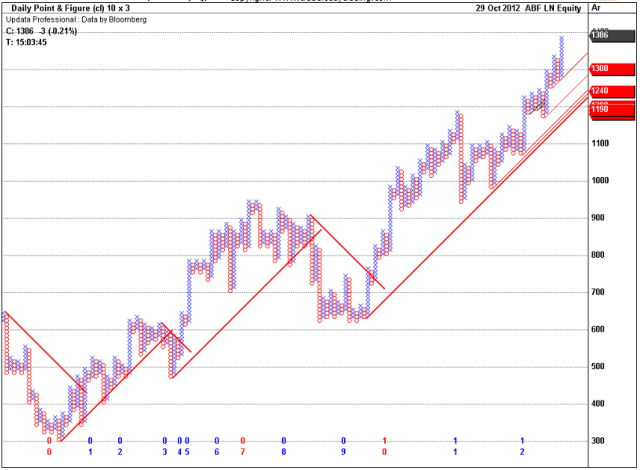
Despite their many benefits, P&F charts have a few disadvantages. These include:
- Reversal and box size scale impact signal development: By modifying a chart's parameters, you can control whether or not a signal appears. To get accurate results that you can rely on, it's important to use the same method and scale for every chart.
- Don’t display gaps: Overnight gaps are not always easy to spot, making it tough for investors who trade within a day or two.
- On point and figure charts, absences of volume are evident. Regarding value, volume is highly valued by investors and technical analysts. However, because these graphs ignore volume, investors must consult other sources to complete their analysis.
Analyzing a Point and Figure Chart
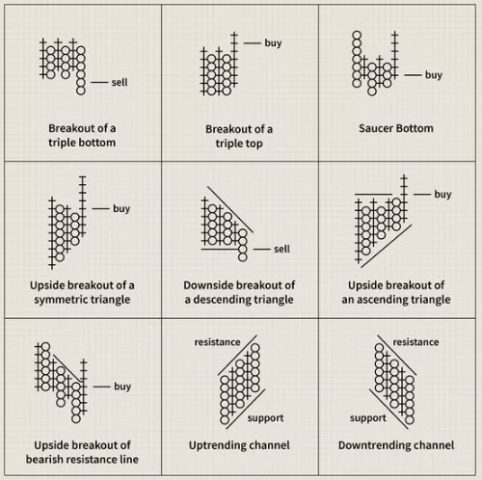
P&F chart traders can use indicators such as supports, resistance, and moving averages, among other patterns, to study the movements of a given chart.
When reading a Point & Figure chart, investors should look for four basic indicators: trend lines, support, and resistance levels. By doing this correctly, you can increase your chances of investment success.
Support levels are more easily discernible on P&F charts. Investors and traders can create a line connecting the lows of an arrangement of O's with shared bottoms. Moreover, they can draw a horizontal Resistance line at the peak of X-Columns that have sequential equal highs.
Point and Figure Charts Vs. Renko Charts
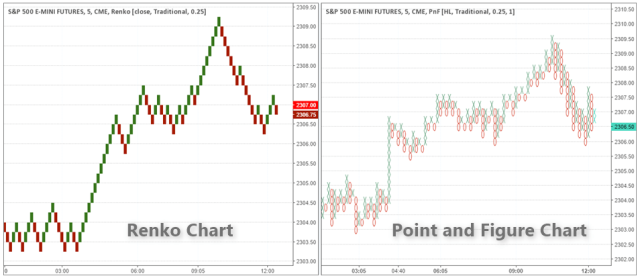
Renko charts are based on box size. They form an up or down brick if the price moves by the box size, and these bricks go to the previous brick. However, Renko chart bricks cannot be close to one another. A reversal happens when the price goes opposite by two box amounts.
The look is the main distinction among the chart kinds. For example, P&F charts are made up of side-by-side columns of X's and O's, whereas Renko charts are formed from boxes placed out one after another.
Best Stocks and Forex Trading Course

Ezekiel Chew is a professional forex trader, coach, and founder of Asia Forex Mentor. With over a decade of trading experience, he has helped many people achieve financial freedom through forex trading.
Ezekiel is one of the most seasoned traders and makes 6-figures per trade. His trading methods are backed by mathematical probability. He has trained many people from all walks of life, including bankers and traders from institutions.
The Asia Forex Mentor program is a complete forex trading course covering everything from beginner to advanced. The course is designed to help people achieve financial freedom through forex trading. It includes all the essential information a trader needs to know to succeed.
So, if you are looking for a comprehensive forex trading course taught by a professional trader with years of experience, then the Asia Forex Mentor program is a great choice.
| RECOMMENDED TRADING COURSE | REVIEW | VISIT |
|---|---|---|
 | #1 Forex, Crypto and Stocks trading course. Ranked most comprehensive by Investopedia and Best by Benzinga. Free to Try! |  |
Best Stock Brokers
| Broker | Best For | More Details |
|---|---|---|
 | Advanced Traders Read Review | securely through Tradestation website |
 | Intuitive Platforms Read Review | securely through Tradier website |
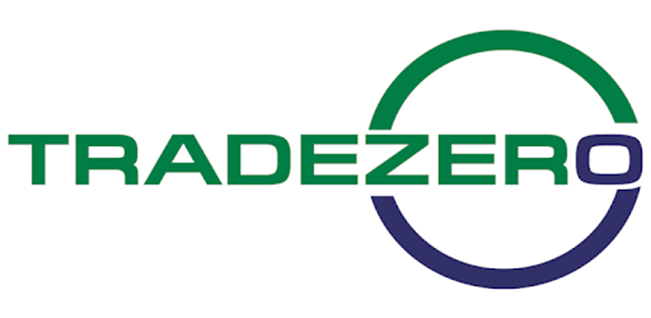 | Powerful Services at a Low Cost | securely through Tradezero website |
 | Professional Forex Traders Read Review | securely through Interactive Brokers website |
Conclusion: Point and Figure Chart
Point and figure charts are easy to select prominent buy/sell and entry/exit points without factoring in time. As a result, these charts visualize price movements and trends well. The price series in a logarithmic price chart is the same as those observed on other charts, except that these are presented without considering time.
Point and figure charts are great for analyzing trends because most small counter-trend movements are filtered out. However, traders need to observe the current asset price to minimize potential losses when using P&F charts.
Traders can notice how a stock is doing with patterns on charts and use them to predict future prices. They're easy to understand so that you can get accurate estimates of stock values. Traders should know that P&F charting is intended for long-term investors and has little value for short-term traders. Technical investors use charting to identify broad price trends and possible profit opportunities referred to as price patterns.
P&F charts can be sluggish to react to changes in the market. The box amount must be exceeded for a breakout to signal that one has occurred. This gives investors an edge because they don't have to worry about bogus breakout signals getting them into trouble, and the price has surpassed the breakout point. As a result, few people buy into the idea that it is ineffective after the price rises.
Most P&F charts will reduce the number of false breakouts, but they will still happen. Something appears to be on the verge of breaking out, but a short time later, it begins to decline.
Point and Figure charts are a great way to keep investors interested in potential trends and filter out small counter-movements. But if there is a reversal, it can eliminate profits. P&F charts are especially useful for spotting reversals, as the reversal quantity is usually large.
Traders should keep an eye on the stock's current price; the risk may be observed in real-time when utilizing P&F charts. Also, be aware of the box size, as it will determine how much security must move to produce a new column.
When it comes to analyzing trends and making predictions, P&F charts are a great tool. They're easy to understand and can provide accurate estimates of stock values. However, P&F charts can be slow to react to changes in the market and may not be ideal for short-term traders.
Point and Figure Chart FAQs
Do Point and Figure Charts Work?
Point and Figure charts are perceived as a vintage approach to charting price changes, yet they are still useful and may provide strong results.
How do you create a Point and Figure Chart?
To create a Point and Figure Chart, you must determine the box size and reversal. The box size is typically a specific amount of money, a percentage of the current price, or it can be based on the average range. Moreover, it starts by finding the lowest low and highest high of the day. You will need to create a column of Xs or Os.
Jordan Blake
Jordan Blake is a cultural commentator and trending news writer with a flair for connecting viral moments to the bigger social picture. With a background in journalism and media studies, Jordan writes timely, thought-provoking content on everything from internet challenges and influencer scandals to viral activism and Gen Z trends. His tone is witty, observant, and sharp—cutting through the noise to bring readers the “why” behind the “what.” Jordan’s stories often go deeper than headlines, drawing links to pop culture, identity, and digital behavior. He’s contributed to online media hubs and social commentary blogs and occasionally moderates online panels on media literacy. When he’s not chasing the next big trend, Jordan is probably making memes or deep-diving into Reddit threads. He believes today’s trends are tomorrow’s cultural history—and loves helping readers make sense of it all.













